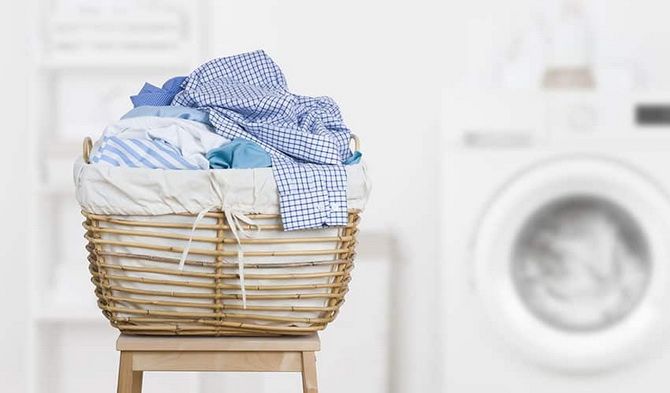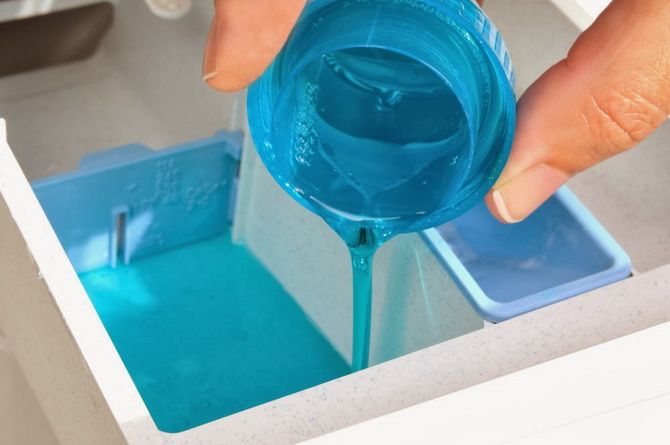The basic principle of responsible consumption is to buy less, but high-quality clothes that will please you for several years. But where is the guarantee that the new outfit will really last a long time? The type of care, frequency of washing and storage have a great influence on safety. We at Joy-pup give you important tips on how to take care of your clothes in a sustainable way so that they will serve you for a long time.

Read the care instructions
To properly care for clothing, you must first know what material it is made of. After all, different fabrics have different care instructions. So make it a habit to check the tags on clothes before purchasing and washing them. This ensures that your clothes do not get damaged or shrink due to improper care and washing.
Wash less
The most important tip for sustainable clothing care is to wash less. Frequent washing will wash out the color and thin the fibers over time. Many consumers wear an item only once and then toss it into the laundry basket. For things like underwear or sweaty T-shirts, this certainly makes sense. But as long as the clothes are not dirty or odorless, you can wear them a few more times before throwing them back into the wash cycle. This protects the fibers and colors of our clothes in the long run.

Wash in cold water
One of the causes of damage to clothing is washing at high temperatures. Hot water is more aggressive to fabrics and can cause shrinkage, fading and microfiber loss. In addition, 90% of the energy needed to run a washing machine is used to heat water. If you wash your clothes in cold water, you not only protect the materials, but also save a lot of energy. In the past, washing was done in warm water to activate the detergent, but modern detergents work just as well in cold water.
Use environmentally friendly laundry detergents
Use only environmentally friendly laundry detergents to protect not only your clothes, but also your skin and waterways. Conventional laundry detergents often contain microplastics and environmentally harmful toxins. Through washing machines, these substances end up in sewage and, ultimately, in the seas and oceans of our planet, thereby endangering marine life.

Use laundry bags
It is recommended to buy, first of all, clothes made from organic natural fibers, as they are more environmentally friendly than synthetic fabrics. However, if you have polyester or nylon clothes, wash them in a wash bag. This traps microplastics from clothing and prevents them from being washed out to sea.
Wash clothes inside out
A little hack to help keep your clothes through the wash cycle is to turn them inside out first. As a result, the fibrous structure on the visible surface is washed out more gently. You should also ensure that the washing machine is never overfilled. This can cause friction during washing, which can damage the fibers.

Steaming instead of ironing
If you’re the type of person who doesn’t like wrinkles, it’s a good idea to steam your clothes rather than iron them. Steaming is much more gentle on the fabric, because the heat from the device does not come into direct contact with it. This is especially suitable for more delicate fabrics such as silk. Only in extreme cases, when the wrinkles cannot be smoothed out with steam alone, can an iron be used.
Dry your laundry outdoors
There is nothing better than the smell of air-dried laundry. Drying in a tumble dryer not only requires a lot of energy, but it can also damage some fibers. Instead, just shake the freshly laundered clothes and hang them outdoors. It is advisable to pay attention to the care instructions, as some garments such as woolen sweaters should be dried in a horizontal position.

Proper storage
In addition to washing, drying and ironing, proper storage of clothes is also important for their lifespan. Moth and mildew protection is important for clothing to last. Store clothing in a cool and dry place to protect it from moisture, sunlight and heat. Make sure the clothes are clean before storing them. This is because dirt can attract moths, which can ruin your clothes. Knitwear should always be stored with lavender or mothballs to create a preventative protection.







Only registered users can leave comments